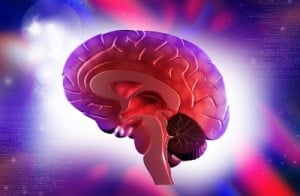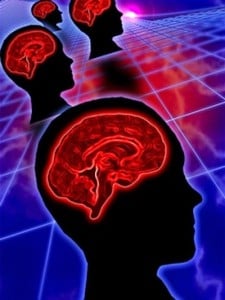Seasonal Affective Disorder (SAD) is a form of depression that is related to the changing seasons, beginning and ending at the same time each year. Most people experience SAD in the fall and winter months when sunlight becomes scarce. Symptoms include depressed mood, low energy, lack of motivation, sleep issues, changes in appetite, difficulty concentrating, and irritability. To combat these symptoms, try these five natural solutions to improve your mood through the fall and winter season.
 Light Therapy Lamp
Light Therapy Lamp
By fall and winter, a person’s exposure to natural sunlight becomes more rare, especially if you work indoors because you are hardly ever exposed to sunlight. Light therapy lamps mimic outdoor sunlight, which researchers believe causes a chemical change in the brain that lifts a person’s mood and reduces symptoms of SAD. Light therapy lamps are recommended for a minimum of 30 minutes each day to experience the benefits, and may be purchased at any online retailer. Check out Verilux's Happy Light here!
- Diet and Exercise

If you are experiencing symptoms of SAD, take note of your diet and exercise plan. Have you been eating more than usual? What kinds of foods are you using to sustain your body? How often do you exercise? Diet and exercise can directly impact mood. To ease symptoms of SAD, eat foods that will nourish your body and brain. Plan an exercise routine that works for your schedule.
 Spend Time with Friends and Family
Spend Time with Friends and Family
One of the best support systems when a person is feeling down is socializing with friends and family. Spending time with people you trust means being able to share concerns in a healthy, safe environment. Make sure you are getting together with your friends and family as often as your schedule allows. If you find yourself with little time, try scheduling a set time each week to get together with friends.
- Therapist

Finding a professional therapist to talk to on a regular basis will help ease the symptoms of SAD. Having a trusted therapist to talk about your problems will make them seem more manageable on a day-to-day basis. Additionally, even the act of setting aside an hour a week to care for yourself emotionally can put the mind at ease.
 Neurofeedback
Neurofeedback
When affected by SAD, changes are occurring within the brain that produce the symptoms experienced by the sufferer. Neurofeedback aims to correct these brain imbalances by training the brain to produce healthy brainwaves naturally, easing the symptoms of SAD. Neurofeedback improves memory, focus, and mood, which improves a person’s overall performance.
First image courtesy of Feelart at FreeDigitalPhotos.net
Second image courtesy of stockimages at FreeDigitalPhotos.net
Third image courtesy of nenetus at FreeDigitalPhotos.net
Fourth image courtesy of Ambro at FreeDigitalPhotos.net
Fifth image courtesy of Chaiwat at FreeDigitalPhotos.net








